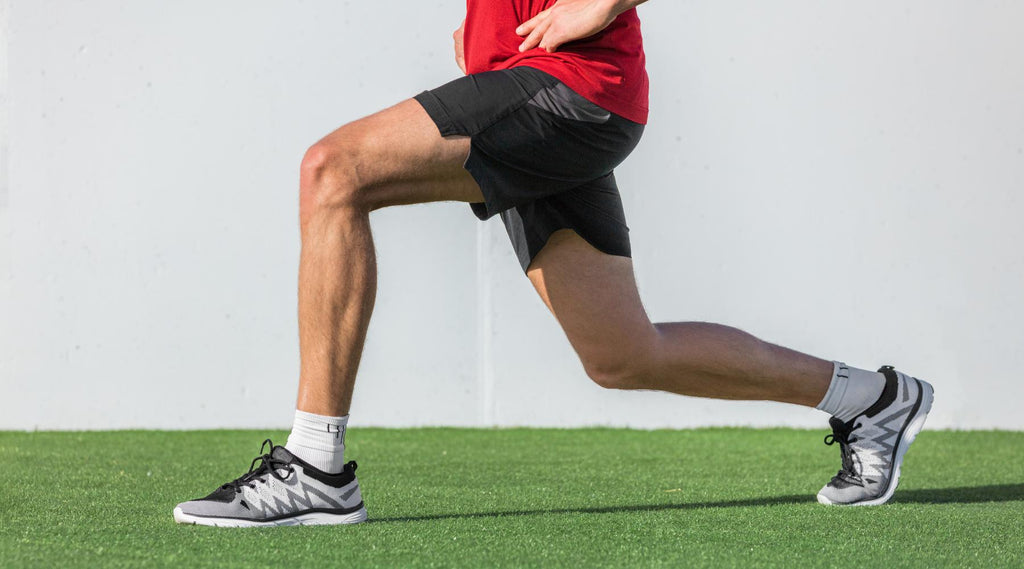Walking is not only a simple form of exercise but also an effective way to shed those extra pounds. If you're looking for a way to lose weight that doesn't involve intense workouts or strict diets, daily walking might just be the answer for you. In this article, we'll explore the numerous benefits of incorporating walking into your daily routine and how it can help you achieve your weight loss goals.
Understanding the Connection Between Walking and Weight Loss
When it comes to weight loss, it's important to understand how walking can help you shed those unwanted pounds. Walking is a low-impact exercise that can be easily incorporated into your daily activities. It helps burn calories, boost your metabolism, and strengthen your muscles. Let's take a closer look at the science behind walking and calorie burning.
The Science Behind Walking and Calorie Burning
Walking helps you burn calories by increasing your heart rate and activating various muscle groups. The number of calories burned during a walk depends on factors such as your weight, speed, and duration of the walk. On average, a 30-minute brisk walk can burn anywhere from 150 to 300 calories.
Discover The Best Way to Burn Calories
Incorporating walking into your weight loss journey is not only about burning calories during the walk itself. Studies have shown that regular walking can also have a positive impact on your resting metabolic rate, which is the number of calories your body burns at rest. This means that even after you've finished your walk, your body continues to burn calories at an increased rate.
How Walking Affects Your Metabolism
Walking helps increase your metabolism in several ways. First, it stimulates the production of certain hormones, such as adrenaline, which can boost your metabolism and help burn fat. Additionally, walking helps build lean muscle, which is more metabolically active than fat tissue. The more muscle you have, the more calories you burn, even at rest.

But did you know that the benefits of walking go beyond just burning calories and boosting your metabolism? Walking also has a positive impact on your mental well-being. When you walk, your brain releases endorphins, which are natural mood-boosting chemicals. These endorphins can help reduce stress and anxiety, making you feel happier and more relaxed.
Furthermore, walking outdoors exposes you to sunlight, which is a natural source of vitamin D. Vitamin D plays a crucial role in maintaining bone health and supporting your immune system. So, not only does walking help you lose weight, but it also contributes to your overall well-being.
The Physical Benefits of Daily Walking
Besides its weight loss benefits, walking also offers a range of physical advantages. Let's take a look at how daily walking can improve your cardiovascular health and contribute to muscle tone and strength.
Did You Know Walking Just 4,000 Steps a Day May Save Your Life?
Walking is a simple yet effective way to improve your overall health and well-being. In addition to weight management, regular walking can have a positive impact on your mental health by reducing stress and anxiety levels. The rhythmic motion of walking can be meditative and calming, helping to clear your mind and improve your mood.
Improving Cardiovascular Health Through Walking
Walking is an excellent cardiovascular exercise that gets your heart pumping and improves blood circulation. By regularly engaging in brisk walking, you can reduce the risk of developing heart disease, high blood pressure, and other cardiovascular conditions. It helps strengthen your heart muscle, lowers cholesterol levels, and improves overall cardiovascular fitness.
Furthermore, walking outdoors exposes you to fresh air and sunlight, which can boost your vitamin D levels and enhance your immune system. The combination of physical activity and natural elements can have a synergistic effect on your health, promoting longevity and vitality.

Walking for Muscle Tone and Strength
Although walking is considered a low-impact exercise, it still engages various muscle groups in your body. Regular walking can help tone and strengthen your leg muscles, including your calves, quadriceps, and hamstrings. It also engages your core muscles, including your abs and back, providing a gentle workout for these essential muscle groups.
Additionally, walking on different terrains, such as uphill slopes or sandy beaches, can challenge your muscles in new ways and enhance your balance and stability. This variation in terrain can make your walking routine more engaging and effective in building strength and endurance throughout your body.
The Psychological Benefits of Walking
Walking doesn't just benefit you physically; it also has numerous positive effects on your mental well-being. Let's explore how walking can act as a stress reliever and improve your overall mental health.
Aside from the physical benefits, walking also offers a unique opportunity for mindfulness. As you walk, you can focus on the sensations of each step, the rhythm of your breath, and the sights and sounds around you. This mindfulness practice can help you stay present in the moment, reducing rumination and promoting a sense of calm.
Walking as a Stress Reliever
Walking allows you to take a break from your daily routine and immerse yourself in the beauty of nature. It provides an opportunity to clear your mind, reduce stress levels, and improve your mood. Whether you prefer a peaceful walk through a park or a brisk walk in a bustling city, the act of walking can help you unwind and recharge.
Furthermore, walking can be a social activity, allowing you to connect with others or enjoy some time alone for introspection. Sharing a walk with a friend can strengthen your social bonds and provide emotional support while walking alone can be a chance for self-reflection and solitude.
The Impact of Walking on Mental Well-being
Engaging in regular physical activity, such as walking, has been linked to improved mental health. Walking helps release endorphins, which are natural mood-boosting chemicals in your brain. These endorphins can help reduce feelings of anxiety and depression, promote a sense of well-being, and improve overall cognitive function.
In addition to endorphins, walking outdoors exposes you to natural light and fresh air, both of which have been shown to positively impact mood and mental health. The combination of physical activity, nature exposure, and social interaction during walks can create a powerful recipe for enhancing your psychological well-being.
How to Incorporate Walking into Your Daily Routine
Now that you understand the benefits of walking, let's explore some practical tips on how to make walking a part of your daily routine.

Walking is not only a great form of exercise but also a wonderful way to clear your mind and connect with nature. To fully embrace the benefits of walking, consider varying your walking routes to explore different neighborhoods, parks, or trails in your area. This can make your daily walks more enjoyable and engaging, keeping you motivated to continue this healthy habit.
Tips for Making Walking a Habit
Start by setting achievable goals, such as walking for 30 minutes every day or taking a certain number of steps each day. Make it easier for yourself by finding a walking buddy or listening to your favorite music or podcast while walking. Additionally, consider incorporating walking into your daily activities, such as walking to run errands or taking the stairs instead of the elevator.
Another effective way to make walking a habit is to schedule your walks at the same time each day. Whether it's a morning stroll to kickstart your day or an evening walk to unwind, having a set time for walking can help integrate it seamlessly into your routine.
20-Minute Brisk Walking Workout For Beginners
Overcoming Common Obstacles to Daily Walking
When it comes to daily walking, there may be obstacles that prevent you from making it a consistent habit. Whether it's lack of time, bad weather, or motivation, there are ways to overcome these hurdles. For example, you can break your walking sessions into smaller chunks throughout the day or invest in indoor exercise equipment like a treadmill or stationary bike to use on days when outdoor walking is not possible.
Additionally, consider joining a walking group or community to stay motivated and accountable. Walking with others not only adds a social element to your exercise routine but also provides a support system to help you stay on track with your walking goals. Remember, consistency is key when it comes to making walking a sustainable part of your daily life.
Safety Tips for Walking
Ensuring your safety while walking is crucial. Here are some safety tips to keep in mind:
Walking is not only a great form of exercise but also a wonderful way to explore your surroundings. To fully enjoy your walking experience, consider adding variety to your routes. Explore different neighborhoods, parks, or trails to keep things interesting and engaging. Changing your walking environment can also help prevent boredom and keep you motivated to stay active.
Proper Walking Techniques to Avoid Injury
When walking, maintain an upright posture, engage your core muscles, and relax your arms. Take smaller strides and land on your heels, rolling through the middle of your foot to your toes. Wearing comfortable and supportive shoes can also help prevent injuries and provide additional cushioning.
Another important aspect of proper walking technique is to maintain a steady pace. Avoid overstriding, which can lead to muscle strain and fatigue. Instead, focus on a consistent and comfortable pace that allows you to enjoy your surroundings and maintain good form throughout your walk.
Essential Gear for Safe Walking
Investing in the right gear can help you stay safe while walking. Choose lightweight, breathable clothing that allows for a full range of motion. Wear reflective clothing or accessories if walking in low-light conditions. Don't forget to apply sunscreen and bring along a water bottle to stay hydrated during your walks.
Additionally, consider carrying a small first aid kit and a fully charged cell phone in case of emergencies. Being prepared with essential items can give you peace of mind and ensure that you are ready to handle any unexpected situations that may arise during your walks.
Measuring Your Progress
Tracking your progress is essential to stay motivated and make adjustments as needed. Let's explore how to set realistic weight loss goals and monitor your journey effectively.
Setting Realistic Weight Loss Goals
When it comes to weight loss, setting realistic goals is crucial. Aim to lose 1-2 pounds per week, as this is considered a healthy and sustainable rate of weight loss. Keep in mind that losing weight too quickly can have negative effects on your health and make it harder to maintain in the long run.
How to Stay Consistent with Working Out
But how do you determine what is realistic for you? It's important to consider factors such as your current weight, body composition, and overall health. Consulting with a healthcare professional or a registered dietitian can help you set personalized goals that take into account your unique circumstances.
Tracking Your Walking and Weight Loss Journey
Using a simple step counter is an effective way to monitor your daily walking activity. These devices can track your steps with extreme accuracy, offering a clear view of your progress. By keeping an eye on these metrics, you can set realistic goals and stay motivated.
Step counters vs smart devices: what is more accurate?
Additionally, maintaining a journal to note your physical and mental state post-walk can further boost your motivation and accountability. It's crucial to recognize the value of non-scale victories, such as the energy surge, sense of achievement, and mental clarity walking brings.
Embrace the journey, understanding that setbacks are growth opportunities. Walking consistently is key to enjoying its myriad benefits, making it an integral part of a weight loss strategy that enriches both body and mind.
But tracking your journey goes beyond just numbers and statistics. It's important to pay attention to how walking makes you feel. Notice the boost in energy, the sense of accomplishment, and the mental clarity that comes with each step. By being mindful of these non-scale victories, you'll find even more motivation to continue on your weight loss journey.
Remember, progress is not always linear. There may be days when you don't meet your goals or when you feel discouraged. But don't let that derail you. Use those moments as an opportunity to reflect, learn, and make adjustments. It's all part of the process.
In conclusion, walking daily is an excellent way to lose weight while enjoying numerous physical and mental benefits. Whether you're a beginner or already active, walking can be easily incorporated into your lifestyle. By understanding the connection between walking and weight loss, recognizing the physical and psychological advantages, and following practical tips, you can make walking an enjoyable and effective part of your weight loss journey. So lace up your shoes, step out, and start reaping the benefits of daily walking!





